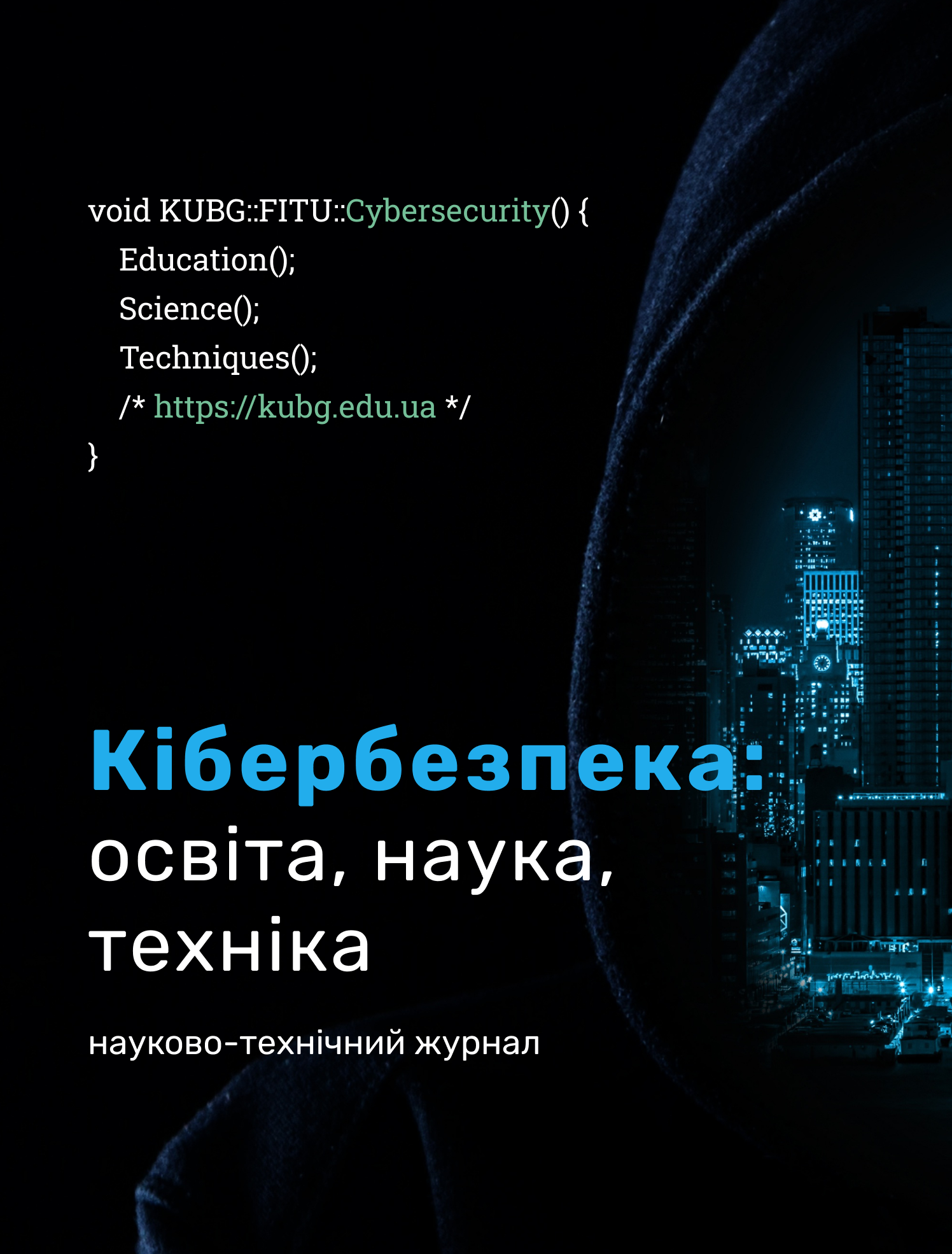METHODOLOGY FOR ASSESSING THE IMPACT OF INFORMATION THREATS IN THE CONDITIONS OF INFORMATION CONFRONTATION
DOI:
https://doi.org/10.28925/2663-4023.2024.24.8189Keywords:
informational security, informational and psychological confrontation, informational threat, dissemination of information, modeling of information influenceAbstract
The problem of information confrontation as rivalry in the information sphere with the aim of influencing various aspects of social relations is extremely important in the period of hybrid war. The object of the study was to the models of the dissemination of information and models of information confrontation. The goal of the work is the determine the features of the dissemination of informational threats in the conditions of informational and psychological conflict using a mathematical model based on modern achievements of social psychology, and to find optimal modes of informational dissemination and means of neutralizing informational threats. Mathematical models are proposed that describe the processes of the dissemination of informational threats in the conditions of informational and psychological conflict based on the innovation diffusion model and rivalry models. It is assumed that two flows of information dissemination in society so that each individual can become a supporter of one or the other side. The peculiarities of the methods of choosing behavioral strategies by subjects of influence in the social network during information confrontations are analyzed. The conditions under which one of the parties to the conflict can achieve an advantage by systematically varying the characteristics of the process have been studied. Based on the analysis of mathematical models of the dissemination of information threats, meaningful characteristics are defined, the management of which will reduce or neutralize the impact of the flow of negative information. The presented mathematical models allow to make for both quantitative and qualitative analysis of the main characteristics of the dynamics of information confrontation. The prospects for further research may consist in the generalization of the proposed models for a larger number of information flows and taking into account the dynamics of changes over time in the intensity of information dissemination and other characteristics.
Downloads
References
Stephen, C. W. (2011). Revealed: Air Force ordered software to manage army of fake virtual people. https://www.filmsforaction.org/news/revealed-air-force-ordered-software-to-manage-army-of-fake-virtual-people
Hrabar, I. H., Hryshchuk, R. V., & Molodetska, K. V. (2019). Bezpekova synerhetyka: Kibernetychnyi ta informatsiinyi aspekty. ZhNAEU.
Pastor-Satorras, R., & Vespignani, A. (2001). Epidemic spreading in scale-free networks. Physics Review Letters, 86(14).
Sageman, M. (2004). Understanding Terror Networks. University of Pennsylvania Press.
Horbulin, V. P., Dodonov, O. H., & Lande, D. V. (2009). Informatsiini operatsii ta bezpeka suspilstva: Zahrozy, protydiia, modeliuvannia. Intertekhnolohiia.
Anosov, A. O., & Puzniak, Z. M. (2017). Informatsiino-oriientovana model yak realizatsiia metodyky vyiavlennia vplyvu na dostovirnist informatsii v informatsiinomu prostori. Suchasnyi zakhyst informatsii, 4(32), 55–59.
Hrechka, S. O. (2020). Naratyvni tekhnolohii modeliuvannia imidzhu Ukrainy v umovakh informatsiino-psykholohichnoho protyborstva. Young Scientist, 8(84), 183–189. https://doi.org/10.32839/2304-5809/2020-8-84-37
Buriachok, V. L., Tolubko, V. B., Khoroshko, V. O., & Toliupa, S. V. (2015). Informatsiina ta kiberbezpeka: Sotsiotekhnichnyi aspekt. DUT.
Barrett, C., Eubank, S., & Marathe, M. (2006). Modeling and simulation of large biological, information and socio-technical systems: An interaction based approach. Interactive Computation, 353–392.
Bin, H., & Zhang, D. (2007). Cellular – Automata Based Qualitative Simulation for Nonprofit Group Behavior. JASSS, 10(1).
Tatnall, A. (2010). Actor-Network Theory and Technology Innovation: Advancements and New Concepts. Information Science Reference.
Bass, F. (1969). A new product growth for model consumer durables. Management Science, 15(3), 215–227.
Mahajan, V., & Peterson, R. (1985). Models for Innovation Diffusion. Beverly Hills.
Karpovych, I. M., Hladka, O. M., & Ustymchyk, M. (2018). Modeliuvannia rynku prohramnoho zabezpechennia ta yoho osoblyvosti. Visnyk Natsionalnoho universytetu vodnoho hospodarstva ta pryrodokorystuvannia, 2(82), 249–258.
Maevsky, D. A., Maevskaya, E. J., Jekov, O. P., & Shapa, L. N. (2014). Verification of the software reliability models. Reliability: Theory & Applications, 9(3(34)), 14–23.
Dudatyev, A., Kupershtein, L., & Voitovych, O. (2023). Information Counterfeature: Models Of Implementation And Evaluation Of Information Operations. Cybersecurity: Education, Science, Technique, 4(20), 72–80. https://doi.org/10.28925/2663-4023.2023.20.7280
Published
How to Cite
Issue
Section
License
Copyright (c) 2024 Олена Гладка, Іван Карпович, Анастасія Тимракевич

This work is licensed under a Creative Commons Attribution-NonCommercial-ShareAlike 4.0 International License.




